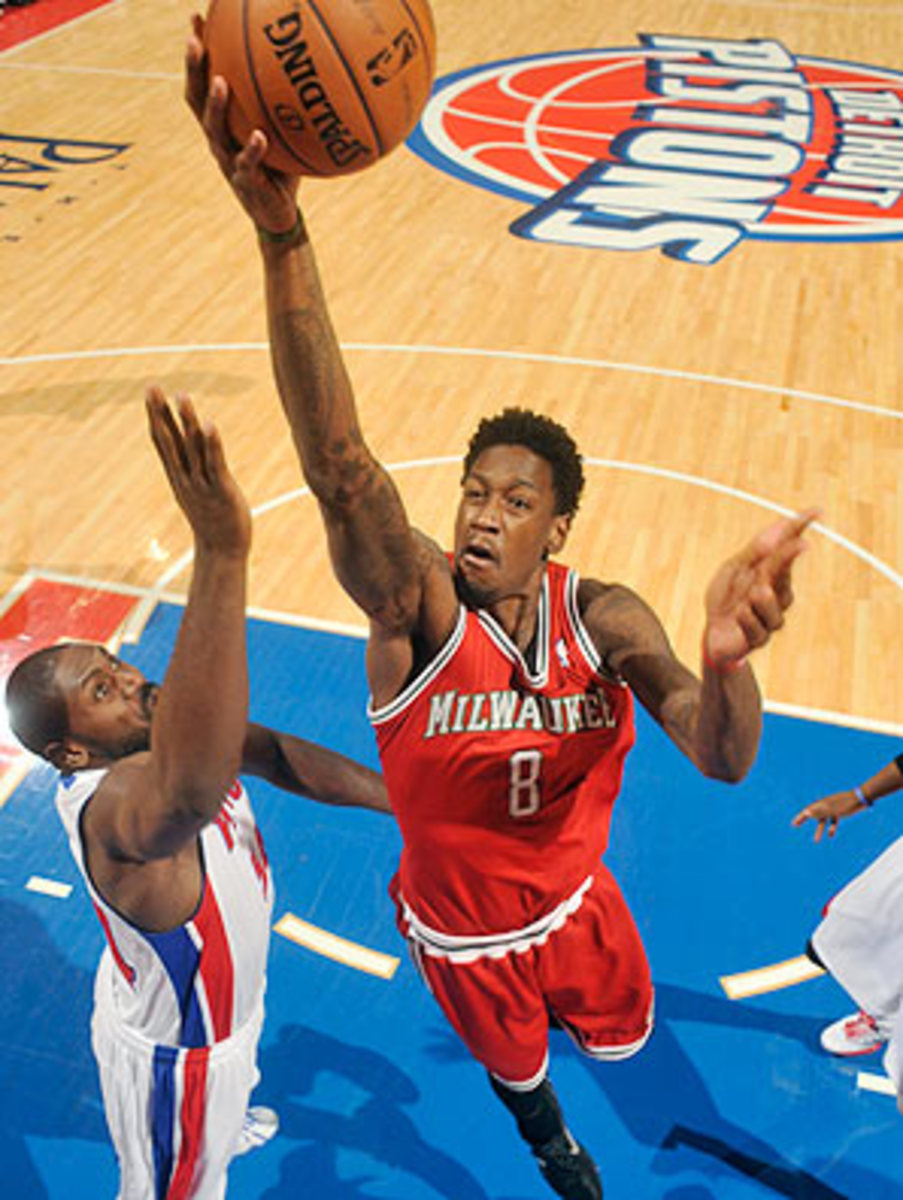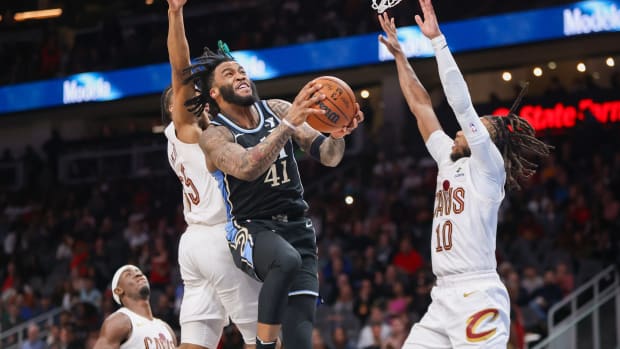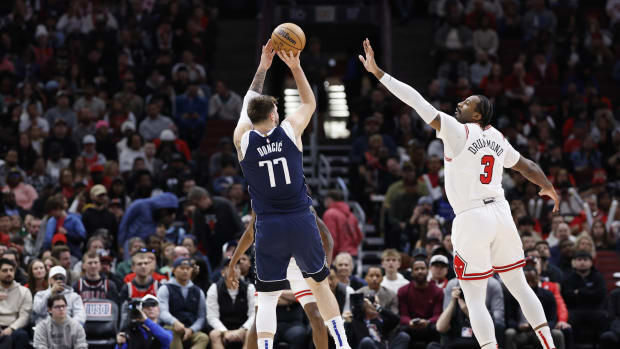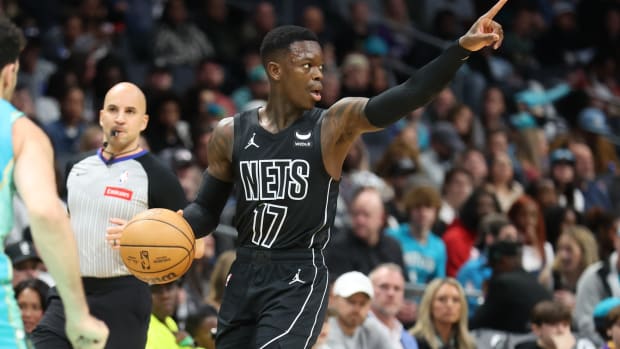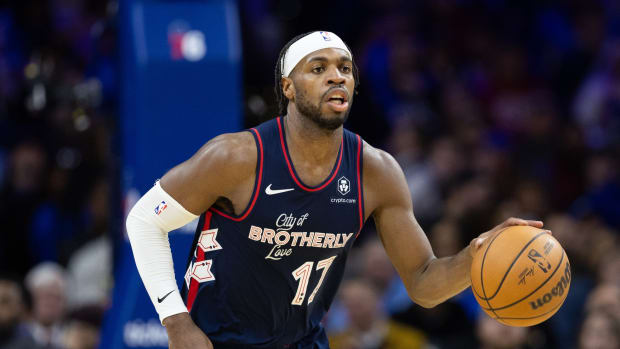More polished Sanders hopes to be The Next Big Thing
In the winter of 2009, NBA scouts flocked to Virginia Commonwealth University, lured by a fearless point guard named Eric Maynor, who would soon become a first-round draft pick. While watching Maynor in Richmond, the scouts noticed a springy center on the Rams' roster with no advanced post moves and few discernible skills, other than his underdeveloped 6-foot-11 frame, spidery 7-7 wingspan and uncanny ability to block about one shot every 10 minutes. Larry Sanders was project personified, but he declared for the draft in the spring of 2010, and teams remembered him partly because of Maynor.
The Bucks held the No. 15 pick that season, stuck in that no-man's land right outside the lottery, where they so often find themselves. The Bucks are not typically good enough to attract marquee free agents, and not typically bad enough to merit premier draft choices, so they must take some risks to break out of the league's large middle class. "The preference is usually, 'Let's be a team that picks in the top five, or be a really good team that picks at the end,'" said general manager John Hammond. "The middle can be challenging. We liked Larry because we needed length and athleticism and someone who could play above the rim. It wasn't so much taking a chance on Larry, even though he is a little raw."
Calling Sanders raw is like calling sushi rare. In this AAU age, when fringe prospects are anointed shortly after puberty and funneled to elite high-school programs and travel teams, Sanders did not even play organized basketball until he was 16. His first high school didn't offer sports, and he didn't mind, because he preferred art. He would goof around at a playground in his hometown of Port St. Lucie, Fla., dribbling a ball between his legs. "Sometimes, I'd get picked to play because I was tall," Sanders said. "But then my team would lose the first game and I'd never get picked again. I wasn't any good."
As he spoke, Sanders sat in the visiting locker room at Boston's TD Garden, where he had just scored 17 points, grabbed 20 rebounds and made 8-of-10 field goals in a victory over the Celtics. Now 24 and in his third NBA season, Sanders blocks more shots per game than anybody except Serge Ibaka. He ranks in the top 10 in rebounds per 48 minutes. And he would also rank in the top 10 in shooting percentage if he qualified. When you consider where he started, the Most Improved Player Award was made for him.
As a sophomore, Sanders transferred to Port St. Lucie High School, where the basketball coaches asked him to join the team. In his first game, he scored in the wrong basket. "They were very patient with me," Sanders said. "They never got frustrated. They taught me how to play." They gave him simple instructions -- run the floor, block the shot -- and he followed that advice to VCU and then to Milwaukee. "But I tell people all the time, 'I want to be a big player, not just a big guy,'" Sanders said. "I think I can be more."
For most athletes, the desire to expand their craft is healthy, but for big men it is often counterproductive. As a rookie Sanders took most of his shots 16-23 feet from the basket, according to hoopdata.com, a preposterous figure given how easy it is for him to turn and dunk. According to Brew Hoop, a Bucks blog, Sanders fired more long twos per minute than guard Brandon Jennings. The results were predictably poor, as Sanders made just 31 percent of shots from that area, and his defense also suffered. Last season, he led the league in fouls per 48 minutes and appeared to grow enraged with each whistle, called for seven technicals and ejected twice. Normally genial and approachable, Sanders studied himself on tape and didn't like what he saw.
"We get a lot of young kids at our home games who watch us and I know they're watching on TV when we're on the road," Sanders said. "I want to play with emotion, but I lose control sometimes, and I don't want them to see me that way. I think about them a lot." Sanders still leads the NBA in fouls per game, which actually represents growth, because his fouls per 48 minutes are down from 9.9 to 7.4.
Sanders spent the offseason at IMG, where trainers ordered him to stand with his back to the basket, and fired a ball at him the moment he turned around. They yelled "left" or "right," like they were playing Simon Says, and he had to drive in that direction all the way to the rim. "It helped me make decisions on the fly," Sanders said. His work didn't show in Summer League -- "He wasn't very good," said Bucks coach Scott Skiles -- but the team was impressed he came at all. Many third-year pros refuse.
Sanders' perseverance, and the Bucks gamble, is finally paying off. His minutes, points, rebounds and blocks have all about doubled. He is taking a vast majority of his shots at the rim and his field goal percentage is up to 54.1. The model for Sanders is Tyson Chandler, another rangy center who once fashioned himself a mid-range jump shooter like Kevin Garnett or Dirk Nowitzki. In his seventh NBA season, Chandler was still honing his outside shot, and he remembers making two of them in an exhibition with the Hornets. After the game, he was celebrating those two jumpers, when he asked himself: "What am I doing? Why am I trying to do something that other people do so much better than me?"
Shortly thereafter, Chandler found his calling, and now he is leading the league in field goal percentage for the second year in a row, mainly because he barely takes a shot more than three feet from the hoop. Every team wants a player like Chandler, who doesn't miss on offense and affects each possession on defense. With the preponderance of pick-and-roll in today's NBA, coaches covet long and hyper-athletic big men who can rush out to the perimeter and harass guards, then scramble back to the paint and protect the basket. No one is better than Chandler, but Sanders possesses the same tools. "His strength is his length, his ability to run and move his feet laterally," Hammond said. "He can trap a screen-and-roll and get back on the play."
Still, he is best when the ball goes up. Before New Orleans played Milwaukee this season, Celtics coach Doc Rivers told his son, Hornets guard Austin Rivers, to watch out for Sanders. "Be careful," Rivers said. "You get a step too deep and he'll block you." The coach tried to explain how Sanders baits the hook, hanging back to give the appearance of a clear shot, before unleashing that 7-7 wingspan at the last moment. He watched the game to see if his boy was paying attention. "I think Larry blocked his first two shots," Rivers said. He laughed, because there is no shame anymore in being rejected by Larry Sanders, who has taken a great many by surprise.






























